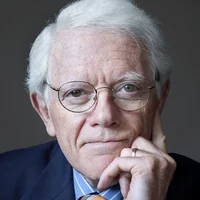
Canfor Pulp Products Inc
TSX:CFX

Canfor Pulp Products Inc?

| US |

|
Johnson & Johnson
NYSE:JNJ
|
Pharmaceuticals
|
| US |

|
Berkshire Hathaway Inc
NYSE:BRK.A
|
Financial Services
|
| US |

|
Bank of America Corp
NYSE:BAC
|
Banking
|
| US |

|
Mastercard Inc
NYSE:MA
|
Technology
|
| US |

|
UnitedHealth Group Inc
NYSE:UNH
|
Health Care
|
| US |

|
Exxon Mobil Corp
NYSE:XOM
|
Energy
|
| US |

|
Pfizer Inc
NYSE:PFE
|
Pharmaceuticals
|
| US |

|
Palantir Technologies Inc
NYSE:PLTR
|
Technology
|
| US |

|
Nike Inc
NYSE:NKE
|
Textiles, Apparel & Luxury Goods
|
| US |

|
Visa Inc
NYSE:V
|
Technology
|
| CN |

|
Alibaba Group Holding Ltd
NYSE:BABA
|
Retail
|
| US |

|
JPMorgan Chase & Co
NYSE:JPM
|
Banking
|
| US |

|
Coca-Cola Co
NYSE:KO
|
Beverages
|
| US |

|
Walmart Inc
NYSE:WMT
|
Retail
|
| US |

|
Verizon Communications Inc
NYSE:VZ
|
Telecommunication
|
| US |

|
Chevron Corp
NYSE:CVX
|
Energy
|
We'll email you a reminder when the closing price reaches USD.
If you don’t study any companies, you have the same success buying stocks as you do in a poker game if you bet without looking at your cards.

Utilize notes to systematically review your investment decisions. By reflecting on past outcomes, you can discern effective strategies and identify those that underperformed. This continuous feedback loop enables you to adapt and refine your approach, optimizing for future success.
Each note serves as a learning point, offering insights into your decision-making processes. Over time, you'll accumulate a personalized database of knowledge, enhancing your ability to make informed decisions quickly and effectively.
With a comprehensive record of your investment history at your fingertips, you can compare current opportunities against past experiences. This not only bolsters your confidence but also ensures that each decision is grounded in a well-documented rationale.
Do you really want to delete this note?
This action cannot be undone.

| 52 Week Range |
0.37
0.99
|
| Price Target |
|
We'll email you a reminder when the closing price reaches CAD.
Choose the stock you wish to monitor with a price alert.

|
Johnson & Johnson
NYSE:JNJ
|
US |

|
Berkshire Hathaway Inc
NYSE:BRK.A
|
US |

|
Bank of America Corp
NYSE:BAC
|
US |

|
Mastercard Inc
NYSE:MA
|
US |

|
UnitedHealth Group Inc
NYSE:UNH
|
US |

|
Exxon Mobil Corp
NYSE:XOM
|
US |

|
Pfizer Inc
NYSE:PFE
|
US |

|
Palantir Technologies Inc
NYSE:PLTR
|
US |

|
Nike Inc
NYSE:NKE
|
US |

|
Visa Inc
NYSE:V
|
US |

|
Alibaba Group Holding Ltd
NYSE:BABA
|
CN |

|
JPMorgan Chase & Co
NYSE:JPM
|
US |

|
Coca-Cola Co
NYSE:KO
|
US |

|
Walmart Inc
NYSE:WMT
|
US |

|
Verizon Communications Inc
NYSE:VZ
|
US |

|
Chevron Corp
NYSE:CVX
|
US |
This alert will be permanently deleted.


























Good
morning.
My
name
is
Miranda,
and
I
will
be
your
conference
operator
today.
Welcome
to
Canfor
and
Canfor Pulp
Fourth
Quarter
Analysts
Call.
All
lines
have
been
placed
on
mute
to
prevent
any
background
noise.
During
this
call,
Canfor
and
Canfor
Pulp's
Chief
Executive
Officer
will
be
referring
to
slide
presentation
that
is
available
on
the
Investor
Relations
section
of
the
company's
website.
Also,
the
companies
would
like
to
point
out
that
this
call
will
include
forward-looking
statements,
so
please
refer
to
the
press
releases
for
the
associated
risks
of
such
statements.
I
would
now
like
to
turn
the
call
over
to
Mr.
Don
Kayne,
Canfor
and
Canfor
Pulp's
Chief
Executive
Officer.
Please
go
ahead.
Mr.
Kayne.
Okay.
Thank
you,
operator.
And
good
morning,
everyone.
And
for
joining
the
Canfor
and
Canfor
Pulp
Q4
2021
results
conference
call.
I'll
make
a
few
comments
before I
turn
things
over
to
Pat
Elliott,
our
Chief
Financial
Officer
of
Canfor
Corporation
and
Canfor
Pulp
and
our
Senior
Vice
President
of Sustainability.
Pat
will
provide
a
more
detailed
overview
of
our
performance
in
Q4.
In
addition
to
Pat,
we
are
joined
by
Kevin
Pankratz,
Senior
Vice
President
of Sales.
I
want
to start
by
recognizing
all
of
our
employees
across
the
organization,
who
in
the
face
of
many
challenges
including
the
pandemic
and
significant
supply
chain
challenges,
our
employees
demonstrated
exceptional
resilience
and
dedication
and
they
were
key
to
our
success
in
2021.
We
continue
to
deliver
on
our
strategy
during
the
year
and
I
would
like
to
highlight
just
a
few
key
areas.
In
October,
we
announced
our
bold
ambition
to
become
a
global
leader
in
sustainability.
I'd
like
to
thank
everyone
across
the
organization
who
was
contributing
to
setting
and
achieving
our
sustainability
goals.
This
is
a
team
effort
and
it's
great
to
see
the
support
it's
receiving
from our
employees.
One
area
of
focus
over
the
last
few
months
has
been
working
to
develop
our
carbon
target,
which
we
expect
to
announce
in
Q2.
We
are
pleased
that
forest
products
are
increasingly
being
recognized
for
how
they
help
mitigate
climate
change
as
the
world
moves
away
from
fossil
fuel-based
products.
In
October,
we
announced
our
planned
investment
in
a
new
biofuel
plant
in
Prince
George
through
our
Arbios
joint
venture.
And
progress
continues
to
be
made
towards
construction
of
the
facility.
In
2021,
we
continued
our
focus
on
global
diversification
and
successfully
executed
on
several
strategic
initiatives
announcing
plans
to
construct
the
state-of-the-art
greenfield
sawmill
in
Louisiana,
completing
a
number
of
organic
capital
investments,
purchased
an
additional
operation
in
Sweden,
and
concluded
an
agreement
for
the
purchase
of
Millar
Western
solid
wood
assets.
Since
2018,
and
including
Millar
Western,
Canfor
has
added
2.2
billion
board
feet
in annual
production
capacity
through
our
CAD 1.2
billion
of
investments
in
acquisitions,
which
have
been
focused
mostly
in
the
US
South,
Europe,
and
in
Alberta.
A
much
more
globally
diversified
operating
footprint
is
ensuring
that
we
are
able
to
provide
exceptional
service
to
our
global
customers
as
we
navigate
the
many
challenges
throughout
the
supply
chain.
And
this
was
evident
in
Q4.
We're
continuing
to
assess
additional
organic
and
value-added
external
growth
opportunities
as
we
look
to
grow
our
lumber
business
globally.
In
terms
of
our
results,
our
lumber
business
benefited
from
record
high
pricing
and
strong
operational
performance
during
2021,
with
operating
income
of
CAD 2.2
billion
before
adjusting
items.
In
the
fourth
quarter,
our
lumber
business
operating
income
before
adjusted
items
was
CAD 273
million
supported
by
continued
strong
results
in
Europe.
Despite
extreme
volatility
experienced
during
the
year,
lumber
demand
far
exceeded
available
supply,
resulting in unprecedented
price
increases
and
record-high
earnings
for
our
lumber
operations.
While
our
operations
benefited
from
favorable
market
conditions,
we
faced
a
number
of
significant
challenges
during
the
year,
including
extreme
wildfires,
historic
flooding,
the
impact
of
COVID-19,
along
with
the
many
supply
chain
issues.
As
a
result
of
these
challenges,
as
well
as
ongoing
uncertainty
associated
with
fiber
supply
in
British
Columbia,
many
of
our
sawmills
were
on
reduced
operating
schedules
during
the
third
and
fourth
quarter.
BC
continues
to
be
a
challenging
jurisdiction
to
operate
in
due
to
a
smaller
fiber
basket
as
we
enter
the
post-mountain
pine
beetle
era,
in
addition
to
significant
uncertainty
brought
on
by
several
new
and
proposed
policy
changes,
land
use
decisions,
and
legal
decisions.
A
few
weeks
ago,
we
announced
the
difficult
decision
to
permanently
reduce
the
production
capacity
at
our
Plateau
facility
to
align
production
capacity
with
the
sustainable
fiber
supply
in
the
region.
We
regret
the
impact
this
decision
will
have
on
our
employees,
and
we
are
committed
to
supporting
those
impacted
through
the
transition,
including
providing
jobs
to
those
who
would
like
to
stay
with
Canfor.
We
also
announced
CAD
14 million
investment
in
Plateau
to
improve
manufacturing
flexibility
and
lumber
recovery
and
better
align
the
manufacturing
capabilities
of
the
Plateau
operation
with
existing
fiber
supply.
While
these
closure
decisions
are
difficult,
we
remain
focused
on
enhancing
value
and
maximizing
returns
from
our
fiber
basket
in
British
Columbia,
ensuring
the
long-term
success
of
our
operations
with
a
footprint
that
aligns
with
available
economically
viable
fiber.
We
continue
to work
with
government
and
our
indigenous
partners
to
ensure
a
sustainable,
globally
competitive
forest
sector
in
BC
and
are
pleased
to
announce
our
intent
to
sell
our
Mackenzie
tenure
to
the
McLeod
Lake
Indian
Band
and
Tsay
Keh
Dene
Nation,
which
provides
an
opportunity
to
grow
the
nation's
leadership
in
the
forest
economy
and
stewardship
opportunities
within
their
traditional
territories.
Turning
to
Canfor
Pulp,
2021
was
more
challenging,
particularly
in
the
second
half
of
the
year
due
to
significant
transportation
delays
related
to
the
extreme
weather
in
British
Columbia,
COVID-19,
production
downtime
and
weakness
in
the
global
pulp markets.
Before
taking
account
to
an
asset
impairment
charge
that
Pat
will
speak
to,
Canfor
Pulp
had
operating
income
of
CAD
32
million
in
2021,
with
an
operating
loss
of
CAD
41
million
in
the
fourth
quarter
as
a
result
of
significant
downtime
associated
with
supply
chain
constraints,
as
well
as
the
ongoing
repairs,
the
Northwood's
recovery
boiler
number
one.
While
pulp
markets
have
improved
significantly
in
early
2022,
Canfor
Pulp
continues
to
be
impacted
by
ongoing
supply
chain
challenges.
With
our
major
maintenance
on
Northwood's
recovery
boiler
progressing
as
scheduled,
on
time
and
on
budget,
we
remain
focused
on
improving
operational
reliability,
closely
managing
cost
and
maximizing
fiber
utilization
going
forward.
Lastly,
I
would
like
to
thank
Alan
Nicholl,
who
after
14
years
with
Canfor
will
be
leaving
the
company
this
month.
Alan
will
continue
to
serve
as
President
and
CEO
of
Arbios
and
has
taken
on
the
role
of
Managing
Director
with
Licella
Holdings,
our
partner
in
the
Arbios
joint
venture.
I
will
now
turn
it
over
to
Pat
to
provide
an
overview
of
our
financial
results.
Thanks,
Don,
and
good
morning,
everyone.
The
Canfor
and
Canfor
Pulp
quarterly
results
released
yesterday
afternoon
and
come
together
with
an
overview
slide
presentation
in
the
Investor
Relations
section
of
the
respective
company's
website.
In
my
comments
this
morning,
I'll
speak
to
quarterly
and
annual
financial
highlights,
a
summary
of
which
is
included
in
our
overview
slide
presentation.
As
Don
has
already
mentioned,
2021
was
an
exceptional
year
for
Canfor.
In
the
face
of
significant
weather
and
supply
chain
challenges,
we
saw
the
benefit
of
our
diversification
strategy
with
our
global
lumber
platform
generating
unprecedented
earnings
during
the
year.
We're
pleased
to
have executed
on
a
number
of
strategic
initiatives
during
the
year,
supported
by
our
strong
balance
sheet
and
record
earnings.
Capital
expenditures
were
approximately
CAD 430
million
in 2021,
which
included CAD
83
million
for
our
greenfield
sawmill,
as
well
as
various
organic
growth
initiatives
largely
undertaken
in
the
US
South
and
Europe.
Our
greenfield
mill
is
progressing
well,
but
due
to
a
challenging
supply
chain
is
slightly
behind
schedule
and
is
anticipated
to
start
up
in
early
2023.
We
repurchased
approximately
CAD
20 million
of
shares
during
the
year
and
repaid
over
CAD
420
million
of
term
debt,
ending
the
year
with
net
cash
of CAD
1.1
billion.
Looking
ahead
to
2022,
we
currently
anticipate
capital
spending
of
approximately CAD
430
million
in
the
lumber
segment
and have
just
completed
the
Millar
Western
acquisition
yesterday
for
CAD
420
million,
including
target
working
capital
of
CAD
56
million.
For
Canfor
Pulp,
we
are
forecasting CAD
70
million
in
spending,
including
approximately
CAD 30
million
towards
ongoing
repairs to
Northwood's
recovery
boiler
number
one.
In
addition
to
an
expanded
capital
program
in
2022,
we
continue
to
look
at
several
organic
and
external
growth
opportunities
and
plan
to
restart
our
share
buyback
program
and
anticipate
moderate
opportunistic
use
during
the
year.
Turning
to
our
quarterly
results,
our
lumber
segment
generated
operating
income
of CAD
273
million
in
the
fourth
quarter
before
adjusting
for an
asset
impairment
charge
of
approximately
CAD
200
million.
Results
in
the
fourth
quarter
benefited
from
continued
strong
earnings
in
Europe,
with
our
European
operations
contributing
approximately
50%
of
our
lumber
segment
earnings
for
the
second
consecutive
quarter.
In
2021,
EBITDA
from
our
European
operations
was
approximately
CAD
630
million.
In
North
America,
our
results
reflected
the
impact
of
reduced
operating
rates
with
production
and
shipment
volumes
well
below
the
previous
quarter
due
to
significant
supply
chain
challenges,
severe
flooding
in
British
Columbia
and
reduced
trucking
availability
in
the
US
South.
Log
costs
in
Western
Canada
also
reflected
moderately
higher
market-based
stumpage.
While
pricing
in
North
America
increased
significantly
as
the
quarter
progressed,
offshore
sales
realizations
declined
following
the
record
high
prices
experienced
in
Q3.
Due
to
timing
of
shipments
versus
orders,
the
surge
in
lumber
prices
towards
the
end
of
the
fourth
quarter
will
largely
be
realized
in
early
2022.
As
noted,
we
reduced
the
net
book
value
of
both
our
lumber
and
pulp
assets
in
British
Columbia
following
an
impairment
test
completed
in
accordance
with
IFRS. This
nearly CAD
300
million
charge
reflects
the
rightsizing
of
our balance
sheet
to
reflect
the
reduced
availability
of
fiber
supply
in
certain
regions
of
British
Columbia.
Our
pulp
mill –
our
pulp
business,
excuse
me,
had
an operating
loss
of CAD
41
million
in
the
fourth
quarter
before
adjusting
for
the
asset
impairment
charge
of
CAD
95
million.
Results
in
our
pulp
business
reflect the
weaker
global pulp
market
conditions,
as
well
as
the
impact
of
severe
flooding
in
British
Columbia,
which
has crippled
transportation
networks
and
resulted
in
significant
operational
downtime
during
the
quarter.
In
addition,
Canfor
Pulp
announced
extended
capital-related
downtime
at
Northwood.
The
rebuild
of
the
lower
portion
of
the
recovery
boiler number
one
is
going
well
and
mill is
expected
to
return
to
full
production
at
the
end
of
Q1.
While
global
pulp
markets
have
improved
significantly
in
early
2022,
Canfor
Pulp
continues
to
be
impacted
by
ongoing
transportation
challenges
with
a
significant
lag
in
sales
realizations
anticipated
in
the
first
quarter.
As
the
rebuild
of
the
RB1
approaches
completion,
Canfor
Pulp
is
focused
on
improving
operational
reliability,
improving
fiber
yield
and
reducing
and
stabilizing
manufacturing
costs.
And with that, Don I'll turn the call back over to you.
All
right.
Thanks,
Pat.
So,
operator
we're
now
able
to
take
questions
from
analysts.
Great.
We
will
now
take
questions
from
the
financial
analysts.
[Operator Instructions]
Your
first
question
is
going
to be
coming
from
Hamir
Patel
from
CIBC
Capital
Markets.
Please
go
ahead.
Hi,
good
morning.
Don,
your
outlook
was
pointing
to
some
near-term
pressure
in
R&R.
I'm
just
curious,
what
are
you
hearing
from
your
Home
Center
customers
about
on
maybe
a
full-year
basis
in
2022? How
do
they
see
volumes
playing
out
this
year
versus
last
year?
Yeah.
Thanks,
Hamir.
And
I'll
let
Kevin
talk
about
that
because
we –
it's
actually
looks
quite
promising
actually
for
2022.
So,
well,
Kevin,
you
go
ahead...
Sure.
...and
talk about
it.
Sure.
Hamir,
maybe
just
a
bit
of
a
background
there.
We
actually
ended
Q4
with
something
like
beyond
seasonal
norm
takeaways
in
the
R&R
segment,
which
was
really
encouraging.
And
we
actually
saw
that
continue
and
–
in
the
year-to-date
so
far.
So
I
would
say
year-to-date,
we
are
experiencing
basically
very
similar
numbers
to
last
year
and
which
is
obviously
encouraging
and
it's
maybe
difficult
to
predict
how
it's
going
to go
for
the
balance
of
the
year
as
prices
trend
up.
But
at
current
prices
and
the
current
indicators
we're
seeing
today,
we're
seeing
pretty
good
takeaway.
And
Kevin,
can
you give
us
a sense as
to
where
inventories
are
in
the
channel?
I
would
say
that
they're
improving.
We
had
obviously
some real
challenges
early
this
year
and
struggling
to
keep
up
but
we
did.
And
I
think,
the
BC
transportation
challenges
are
well
documented
but
I
think
but
we
are
very
fortunate
that
with
our VIDA
Swedish
footprint,
we
were
able
to
offset
some
of
that
pressure
by
increasing
shipments
from
there
into
the
eastern
seaboard.
Great.
Thanks,
Kevin.
And
Don, I
wanted
to
ask
in
Europe
with
the
war
in
Ukraine
and
sanctions
against
Russia, do
you
see
that
effectively
pushing
Canadian
producers
out
of
China
as
trade
flows
readjust?
And
are
you
seeing
any
upward
movement
in
product
pricing
yet
in
Europe?
Yeah.
For
sure
and
good
question
I
think.
And
I
think
first
of
all
in
China,
it
used
to
be
a
significant
part
of
our
business
and
while
it
still
is,
it's
down
significantly
from
where
it was
at
the
peak,
right?
So
but
if
you
just
talk
about
the
UK
− Ukraine
situation
real
quickly,
our
view
right
now
is,
first
of all,
Russia
is about
12%
of
the
global
softwood
production
first
of
all
to
start
with.
And
of
course,
the
most
of
that
production
or
a
good
part
of
its
heavy
to
western
Russia
and
Siberia
will
ships
into
China
and
that
will
no
doubt
increase
we
think
for
sure
but
that's
okay.
What
we're
more
thinking
about
the
impacts
in
a
positive
way
will
be
around
the
log
supply
to
the
Baltics,
which
is
a
major
region
as
well
as
the
Middle
East,
North
Africa
and
South
Korea.
All
of those
regions
rely
on
Russia
for
a
lot
of
logs
and
that's
going
up
probably
dry
up
to
some
degree
which
creates
an
opportunity
here
in
Europe
for
us
from
a
pricing
point
of
view.
I
mean,
we
think
that
our
European
business
there
is
going to
be
able to
pick
up
a
lot
of
that
lack
of
Russia
supply
into
Europe,
so
we're
looking
we
think
that
will
be
beneficial.
We
haven't
really
seen
any
price
increases
to
speak
of
yet.
It's
been more
just maintaining
where we're
at. But
I
mean,
the
real
question
is
going to
be
down
the
road
here,
what
kind of
impact
here
over
the
next
two,
three,
four
months.
But
we
do
believe
at
least
short-term,
that
it
will
be
beneficial
to
some
degree,
potentially
from
a
price
point
of
view,
just
because of
the
lack
of
product
coming
in
from
Russia
into
Central
Europe,
right?
But
that's
kind
of
how
we're
seeing
it.
Now
I
guess
the
other
thing
we
might
see,
Kevin,
would
be,
too,
is
that
the
European
producers
that
were
shipping
into
North
America
in
a
big
way
will
probably
revert
back
and
try
to
fill
that
demand
with
Russia
exiting
Europe
to
some
degree,
and
that
should
help
actually
stabilize
prices
even
better
here
in
North
America.
Okay.
Great.
Thanks.
That's
all
I
had.
I'll
get
back
in the
queue.
Thanks.
Your
next
question
will
come
from
Sean
Steuart
with
TD
Securities.
Please
go
ahead.
Thanks.
Good
morning,
everyone.
And,
Pat,
I'll
start
with
you.
Can
you
give
us
context
on
specific
assets
that
were
written
down
in
the
provisions
in
lumber
and
pulp
with
those
write-downs
this
quarter?
Sean,
it's
more
of a
general
provision
across
the
BC
assets
we
don't
specify
by
mill
site,
so
it's
across
the
fleet.
And
we
basically
look
at the
discounted
cash
flow
over
a
number
of years
across
that
whole
fleet
and
then
we
compare
that
back
against
the
book
value,
and
that's
the
adjustment.
It's
not
a
specific
as
a mill
level
adjustment.
Okay.
All
right.
Thanks
for
that.
US South
platform,
you
guys
referenced
some
timber
cost
inflation,
your
competitors
did
as
well.
Can
you
help
us
understand
how
much
of
this
do
you
think
is
temporary
related
to
weather
or
transportation
disruptions?
How
much
might
be
structural?
What
are
you
thinking
going
forward
for
that
cost
line
item?
Yeah.
Well,
I
think
it's
in
the
neighborhood
of
probably
5%
is
what
we
sort
of
guided
before
roughly
what
we
see
overall
for
this
year.
But
largely,
the
issues
that
we
have
is
what you've
outlined
there,
weather
wise,
trucking,
the
availability
of
trucking
is
a
big
one,
which
is
really
labor,
I
guess,
overall.
So,
all
of those
things
have
contributed
to
some
of
that
inflation
that
we're
seeing
here.
And
–
but
really
it's
–
it
varies
a
lot
depending
on
the
regions
as
well
across
the
US
South.
So, obviously
overall,
maybe
a
little
bit
of
it is
structural,
but
there's
a
lot
of
it
just
strictly
caused
by
some
of
those
unusual
events.
Okay.
Thanks,
Don.
Last
question
for
now,
I
know
there's
a
lot
of
moving
pieces
but
if
you
normalize
for
the
Millar
Western
acquisition,
just
try
to gauge
in
Q1
how
your
Western
Canadian
lumber
production
is
trending
versus
what
we
would
have seen
in
Q4.
It
sounds
like
there's
still
a
lot
of
challenges
getting
wood
into
the
mills,
getting
product
to
market.
Can
you
give
any
sense
of
how
that's
trended
versus
what
we
just
saw
after
the
fourth
quarter
[ph]
for
you
guys? (00:18:48)
Go
ahead, Pat.
I
can
take
– yeah, Sean,
I
can
take
that. I
mean,
clearly
in
BC
in
Q4,
we
had –
we're
running
our
business
at
80%
in
British
Columbia
for
the
most
part,
and
we
took
some
Christmas
downtime
as
well.
So
right
there,
you're
going to
have
a
big
lift.
And
then obviously
we're
going
to
add
the
Alberta
assets' 630
million feet
on
an
annualized
basis.
We
are
having
some
shipping
challenges
out
of
BC.
I
think
we
are
going to
build
some
inventory
in
the
first
quarter.
Hard
to
quantify
that,
but
I
would
say
we'd
be
up
substantially
quarter-over-quarter.
Okay.
All
right.
That's
encouraging.
That's
all
I
have
for
now.
Thanks,
guys.
Right.
Thanks,
Sean.
Your
next
question
will
come
from
Mark
Wilde
from
BMO.
Please
go
ahead.
Good
morning,
Don,
Kevin,
Pat.
Good
morning, Mark.
Good
morning,
Mark.
To
start
off,
either
Don
or
Kevin,
can
you
give
us
some
sense
of
what
the
inventories
looks
like
at
your
sawmills
in
Western
Canada
right
now,
just
given
these
transportation
issues?
Yeah.
For
sure.
So
maybe
I'll
just
do
it
by
region
there,
a
bit
there,
Mark.
So
I
think
in
Europe,
it's
actually –
they
were
all
in
balance,
normal
inventory
levels,
and
transportation
today
has
been
quite
fluid.
I
would
say
the
similar
situation
for
the
US
South,
we're
right
in
line.
We
haven't
had
the
same
challenges.
But
in
Western
Canada,
we
are
up,
for
sure,
really
struggling
with –
railcar
supply
is
the
biggest
challenge,
trying
to
help
offset
that
a
little
bit
with
trucks,
and
of
course
the
backup
on
the
marine
with
containers.
So
we
are
up
–
we're
up –
we're
definitely
up
above
where
we
expect,
and
it
probably
is
going to
take
us
by
the
end
of
Q2
to
get
it
back
down
to
normalized
levels.
Any
way
to
quantify
kind
of
what
that
increase
might
look
like,
Kevin?
It's
kind
of
fluid,
so
all
I
know
is
it's
going
to
be
up
there,
Mark.
I
can't
really
give
a
specific
number.
Okay.
All
right.
Next
question.
Just
it
seems
like
when
I
read
through
the
MD&A,
there
was
more
in
there
on
the
longer-term
challenges
of
fiber
supply,
including
for
the
pulp
mills.
So
I
wondered
if
you
could
just
shed
some
more
general
light
on
your
thinking
around
the
four
existing
pulp
mills.
For
sure.
I
think,
Mark,
and
we
talked
about
this
a
little
bit
just
in
the
context
of
BC
fiber
supply
period,
not
really
singling
out
necessarily
pulp
mill
particularly,
but
just
looking
at
overall
fiber
supply
in
British
Columbia,
we
do
believe
there's
going
to continue
to
be
pressure
there
on
a
downwards
direction
here
in
terms
of
overall
fiber
supply,
and
as a
result
of
that,
probably
another
2
billion
board
feet
of
lumber
that
is
going
to
need
to
be
reduced
here
in British
Columbia,
just
face
the
fact,
so
that's
due
to
beetle,
it's
due
to
forest
fires,
it's
due
to
policy
just
a
bunch
of
different
things.
And
we've
– I
think
we've
mentioned
that
before.
In
addition
to that
and
as
a
result
of
that,
clearly
it's
going to
be
less
residual
fiber
as
well.
So
there's
going
to
be
an
impact
here
in
BC
over
the
next
several
years
and
it
could
be
one,
two,
three
years
but
over
that
timeframe,
we're
going
to
see
some
challenges
on
some
of
the
secondary
manufacturing
facilities,
I'm
sure.
In
addition
to
that,
the
pulp
mill
or
two
perhaps
probably
our
view
right
now
probably
would
be
more
like
one
depending
on
the
size.
And
that's
kind
of
how
we
see
it,
which
is probably
no
surprise
because
that's kind
of been
what
we've
been saying
here
for
a
while, right,
so.
Yeah.
[ph]
Maybe, Don,
without
putting
like – (00:22:30)
trying
to
get
too
granular
on
this
but
just
when
we
think
about
your
own
pulp
footprint, I
mean,
the
fact
that
you're
putting
a
lot
of
capital
into
Northwood,
I
think,
tells
us
that
your
view
that
mill
as
a
long-term
asset,
is
that
fair?
Yeah.
That
is
very
fair.
And
would
it
also
be
fair
to
say
Taylor
when
you
used
to
report
it
separately,
seemed
like
it
was
only
kind
of
marginally
profitable,
you've taken
downtime
right
there,
right,
at
that
mill
right
now.
Is
that
probably
the
one
that
faces
the
greatest
challenge
in
your
view
of
your
portfolio?
Yeah.
I
mean
it's
a
different
type of –
it's BCTMP
versus
NBSK,
and
clearly
there
are more
challenges
there
for
sure
from
a
fiber
point
of
view
but
also
from
a
more
importantly
from
a
market
point
of
view
too.
And
I
think
in
both
cases
and
so
we
–
but
as
it
stands
right
now,
the
six
weeks
that
we've
announced
is
the
temporary
downtime
is
still
in
place
and
we
haven't
made
any
further
decisions
over and
above
that
going
forward.
Yeah.
Okay.
And
then
just
turning
this
whole
fiber
supply
issue
on
the
lumber
side.
I mean,
you
were
– you've
been
quite
proactive
here,
you
announced
the
Plateau
[ph]
moves
(00:23:41)
in
the
midst
of
really
good
lumber
markets.
Do
you
think
the
sort
of
additional
2
billion
board
feet you
talked
about,
is
that
going
to
come
easily
or
is
that
going
to
take
a
significant
downturn
in
the
market
or
drive
that out
of
the
market,
just
in
your
view?
Well, I
think,
clearly,
the
downturn
could –
if
there
was
a
serious
downturn,
that
would
probably
accelerate
that
in
some
areas,
for
sure.
But
I
think,
I
mean,
again,
we
just
got
to
kind of
face
the
facts
as
an
industry,
there's
going
to be
less
fiber
available
going
forward,
which
is
going
to
be
the
bulk
of
the
reason
why
obviously
low
prices
might
accelerate
that,
like
I
said.
Okay.
And
then,
if
we
look
past
kind
of
the
Monday
closing
on
Millar
Western,
you're
still
sitting
on
a
lot
of
cash
and
it
looks
like
you're going
to
generate
a
lot
of
cash
in
the
first
half
of
the
year.
Can
you
just
give
us
some
sense
for
the
priorities
for
the
cash?
And
then,
you
know,
within
the
M&A
bucket
of
priorities,
if
you
could
just
give
us
some
sense
of
what
you
might
be
most
interested
in
from
both
kind
of
a
location
and a
market
perspective?
Sure,
Mark.
I
mean,
as
Pat
mentioned,
we're
basically
between
the
Millar
Western
and
some
of
the
capital
that
we've
identified
for
this
year is
close
to CAD
900
million
that
we're
spending
just
with
those
two
areas
alone.
Over
and above
that,
certainly,
we've
got – we
got
some
projects
this
year
from
a
sustaining
capital
point
of
view
that's
underway,
as
well
as
we've
still
got
some
ongoing
organic
capital
projects
that
we
have,
also,
we'll
continue
to
be
working
on
this
year
and
going
forward
as
well.
We've
got
the
greenfield
project,
of
course,
going
on
at
DeRidder.
And
as
we
look
forward
here,
maybe
could
be
some
opportunity
there
for
one
or
two
or
whatever
more
there,
too.
Not
only
in
the
US South,
but
could
be
in
Europe
as
well.
In
addition
to that,
just
on
opportunities,
though,
I
think
we
also have
been
pretty
clear
and
we
haven't
really
changed
other
than
maybe
a
bit
more
–
well,
the
US
South
for
sure
is
a
key
area
for
us
and
it's
going
to –
we
still
believe
it's
a
really,
really
solid
area.
We
like
it
down
there
as
you
know,
and
we
see
opportunities
there
going
forward.
In
Europe,
same
thing,
I
mean,
Europe's
been
really,
really
good.
Probably
much
better
than
we
even
expected
and
we
always
thought
it was
going to
be
good.
And
then,
of
course,
Alberta,
[ph]
we know this (00:26:04)
latest
deal,
we
really
feel
very
fortunate
we were
able
to
get
the
Millar
Western
assets.
We
like
Alberta.
We've
always
liked
Alberta.
And
that's
a
new
growth
area
for
us
as
well,
and we're
pretty
pleased
with,
so...
Okay.
You've
got
a
little
position
in
engineered
wood,
I'm
just
curious
whether
you're
thinking
about
going
beyond
lumber
and
perhaps
growing
in
the
engineered wood
area.
Yeah,
for
sure.
It's
something
that
we
look
at
regularly.
I
know
Kevin
and
his
group,
and
Stephen and
his
group
are
looking
at
that
on
an
ongoing
basis.
We
definitely
like
the
position
we
have
in
glulam
in
the
south
with
the
two
mills.
We
have
a
large
market
share.
We
have
a
fantastic
product.
And
we've
had,
frankly
had
lots
of interest
there
from
other
companies
interested
in
them.
But
we
do
believe
it's
a
core
business
for
us
for
the
future,
and
it's
something
that
we
can
leverage
and
increase
as
we
look
forward.
Okay.
Pretty
good.
I'll
turn
it
over.
Thanks,
Don.
Okay.
No
problem.
See
you,
Mark.
Your
next
question
comes
from
Paul
Quinn
with
RBC.
Please
go
ahead.
Yeah.
Thanks,
guys. Just
a
couple
of questions.
One
on
the
CapEx
budget
of
CAD
500
million.
Just
on
the
pulp
and
lumber
side,
if
you
could
split
that
down
between
what
is
maintenance
there
and what
is
strategic
or
project
work?
Yeah. Sure.
Well, maybe,
Pat
[ph]
you
can
go
ahead. (00:27:28)
Yeah.
So
you're
asking
for
maintenance
versus
sort
of
strategic
fall
within
the
bucket
thing?
Sustaining. Yeah.
Yeah.
Yeah.
So
– yeah,
so
the
CAD 430 million,
I don't
know,
we
got
to CAD
200
million
or
probably
the
sustaining
CapEx
on
the
lumber
side.
And
then
on
pulp,
it's
probably CAD
30 million,
CAD
30
million to
CAD
40 million.
There's
a
bigger
number
around
RB1
this
year,
but
it's
CAD
30 million to
CAD
40 million,
Paul, sort
of
sustaining
CapEx.
Okay.
So
then
if
you
got
CAD
200 million
on sustaining
on
lumber,
that
extra
CAD
230 million
that
you're going
to
be
spending,
what's
left
on the
derivatives? Is
that
about CAD
80 million?
And
what's
the
balance and
where
are
you
spending
the
balance?
Yeah.
It's
about
CAD
100
million
on
derivatives, that's
left –
a
little
bit
more
than
CAD
100
million
that's
left.
And
then
just
a
number
of
sort
of
optimization
projects
throughout
the
fleet.
I
mean,
we're
investing
in
both
sides
of
the
border
actually
right
now.
I mean,
we
mentioned
Plateau's
investment.
So
there's
a
series
of
sort
of
smaller
investments
there,
Paul,
that
it
[indiscernible]
(00:28:27) upgrade
the
assets,
but
there's
nothing
as
large
as
the
greenfield
in
that
mix.
Okay.
And
then
congratulations
on
the
potential
sale
in
Mackenzie.
Have
you
got
a
fiber
supply
chip
agreement
with
the
potential
new
owners
there?
No,
not
at
this
point,
we
don't,
but
it's certainly
something
that
we
would
be –
we'll
be
investigating
as
we
look
forward,
though,
but
at
this
point
we don't.
Okay.
And
then
Europe,
you
mentioned
CAD
630
million
in
EBITDA
in
2021,
how
do
you
see
2022
here,
is
that
going to
be
pretty
similar
year?
It's
shaping
up
to
be
pretty
darn
good
year,
for
sure.
So
we'll
see
how
it
plays
out
here
going
forward,
there's
obviously
a
lot
of
geopolitical
that
we've
talked
about
here
earlier
that
may
have
some
influence.
But
for
the
most
part,
that
business
is
solid.
It's
very
sound.
The
upside
there,
in
our
view,
is
definitely
positive
for
sure.
And
so,
but
– obviously
it
depends
a bit
on
price
and
what
prices
do here,
back
half of
the year more,
and
we're
not
concerned
at
all
about
Q1
and
Q2
there
because
they
basically
locked
their
business,
and
as
you
know,
quite
a
bit
longer
than they
do
in
North
America,
right?
So
it's
the
back
half
of
the
year
in
every
case,
but
we
always
creates
a little
more
conservatism,
for
sure.
Great.
We
have
a
pretty
good
view
on
North
American
lumber
prices.
Maybe you
can
help
us
out
with
what's
happening
in
Europe
with
a
little
bit
more
granularity,
given
our
muted
outlook
there.
Sure.
Oh, good, Kevin
why don't
you
take a stab there?
I
get
a
stab
there,
Paul.
So
I
mean,
it's
a
lot
of
different
markets
that
they
serve
there,
right.
Like,
I
think
VIDA
alone serves
about
44
different
countries.
But
the
big
one
is
obviously
the UK
market
and
we
did
see
softness
in
Q4
and
early
into
Q1.
But
we
are
anticipating
some
modest
increases
in
Q1.
But
more
material
increases
in
Q2
because
they
basically
didn't
really
replenish
a
lot
of
inventories
in
that
Q1
period.
So
could
prices
be
in
that
10% –
10-plus
percent
[indiscernible]
(00:30:36)
Paul.
And
also,
Central
Europe
for
the
same
reason.
So
that's
more
of
a
Q2
guidance.
And
then,
like
Don
said
on
the
back
half,
it's
a
lot
of
risks
and
uncertainties,
obviously
with
the
Ukraine
situation
that
could
be
short-term,
potentially
tighter
supply
would
also
have
a
corresponding
inflationary
pricing
but
the
longer
term
impact.
Whether
it's
a
supply
chain,
logistical
challenges,
all
of
that.
It's
just
a
few
unknowns,
but
maybe
[ph]
guys, (00:31:02) just
maybe
tempering
and
moderating
in
the
back
half.
Okay.
Thanks.
I had
just
last
one
on
capital
allocation.
A
lot
of your
peers
have
been
buying
back
shares.
You
guys
look
particularly
inexpensive
and
just
wondering
why
you
don't
see
Canfor
shares
as
a
buy
right
now.
Pat's
going
to
buy
a
few.
Go
ahead.
Yeah.
So,
I
did
mention in
my
comments,
Paul,
we
are going
to
restart
buyback.
I mean,
we
shut
it
off
in
the
fall
because
we
were
working
on
the
Millar
Western
deal.
But,
yeah,
I
mean,
we'll
continue
to
have,
I
think,
a
small
program.
And
we
acknowledge
the
value
that
sits
in
our
shares
right
now.
And
we'll
continue
to
selectively
acquire
some
of
those,
and
we'll start
that
again
here
before
too
long.
All
right.
That's
all
I
have.
Thanks,
guys.
Thanks,
Paul.
Thanks, Paul.
Your
next
question
comes
from
Mark
Wilde
from
BMO.
Please
go
ahead.
Yeah.
Just
a
couple
of
follow-ons,
one,
I
wonder,
Pat,
if
you
could
help
us
at
all
with
just
sort
of
the
Q1
flow through
from
both
lumber
prices
and
pulp
prices.
I
think
when
you
talk
about
pulp,
you
suggested
that
there
were
going to
be
some
delays
in
these
higher
pulp
prices
rolling
through,
I
assume,
because
of
kind
of
transportation
delays.
Yeah.
On
the
pulp
side,
I
mean, I
think
we
see
more
than
a
45-day
lag
in
the
prices.
Depending
on
the
markets,
it
could
be
almost
double
that,
I
think.
And
on
the
lumber,
I
think –
and
we
mentioned in
our
comments,
we
really
did
not
realize
any
of
the
upswing
in
the
price
in
the
fourth
quarter.
The
bulk
of that's
going to
be in
Q1
a
lot
of,
particularly
north –
in
Canada,
our
offshore
markets
actually
trended
down
after
having
record
high price
in
Q3.
So
we'll
see
all
those
prices
move
up
relatively
into
January.
We'll
be
realizing
those
on
lumber.
It
will
take
February,
March
before
we realize
them
on
– realize
those
in
pulp.
Okay.
And
then,
Don,
one
other
question.
I'm
just
curious,
given
your
non-integrated
experience
now,
which
is
growing
in
the
southern
US
and
in
Sweden,
has
this
prompted
any
rethink
on
sort
of
the
need
for
vertical
integration
in
Western
Canada?
Well,
[indiscernible]
maybe
I didn't
get
the (00:33:14)
last
part
of
that, I
didn't
really
catch
that,
if
the
vertical
integration
in
Western
Canada
versus
the
South?
Yeah.
I
mean,
basically
you
operate
on
a
non-integrated
basis
between
kind
of
lumber
and
the
chip,
where
the
chips
go,
in
both
the
South
and
in
Sweden.
In
Western
Canada,
you're
kind
of –
you're
integrated
and
that
you're
supplying
your
residual
chips
to
your
pulp
mill.
So
I
just
– I
wonder,
given
the
experience
in
the
South,
given
the
experience
in
Sweden,
does
that
make
you
rethink
the
strategy
in
Western
Canada
at
all?
Yeah.
I
don't
think
so.
I
mean,
not
at
this
stage.
I
mean,
I
don't know,
Pat,
is
there
anything you
want to
add
to
that?
Like
we...
Yeah.
The
procurement
in
BC
is
different,
right,
than
in
the
South
and in
Sweden.
I
mean,
the
[ph]
tenured (00:34:02)
management
and
I
think
even
just
the
way
it
stands
out
here, mix
stands,
having
that
pulp
and lumber
business
together
has
created
significant
fiber
synergies
over
the
years
in
Canada.
I
mean,
in
the
US,
it's
a
different
procurement
strategy
that
we
employ.
So
I
mean,
I
think
we've
always
saw
the
benefit
of
the
integrated
business. And
I
mean,
even
if
we
weren't,
even
if
we
weren't
the
owners
of the
pulp
business,
Mark,
I
think
we'd
have
a
strong
fiber
supply
arrangement
with
the
pulp
business
because
it's
symbiotic
if
you
follow
me.
So
I
think
we're
always
going
to
be
tight
[indiscernible]
(00:34:31)
Yeah. Okay.
And
Pat,
just
to
be
clear,
the
Millar
Western
residuals,
those
will
continue
to
flow
to
the
Millar
Western
pulp
mill?
Is
that
a
safe
assumption?
That's
correct.
Yeah.
Okay. All
right.
Very
good.
I'll
turn
it
over.
Thanks, Mark.
Thank
you.
There
are
no
further
questions.
I'll
now
turn
it
over
to
Don
Kayne
for
closing
comments.
Please
go
ahead.
All right.
Thanks,
operator.
All
right,
thanks,
operator,
and
thanks
everyone
for
joining
the
call
and
we
look
forward
to
talking
at
the
end
of
Q1.
Thanks
again.
That
concludes
our
conference
call
for
today.
You
may
disconnect
your
lines.